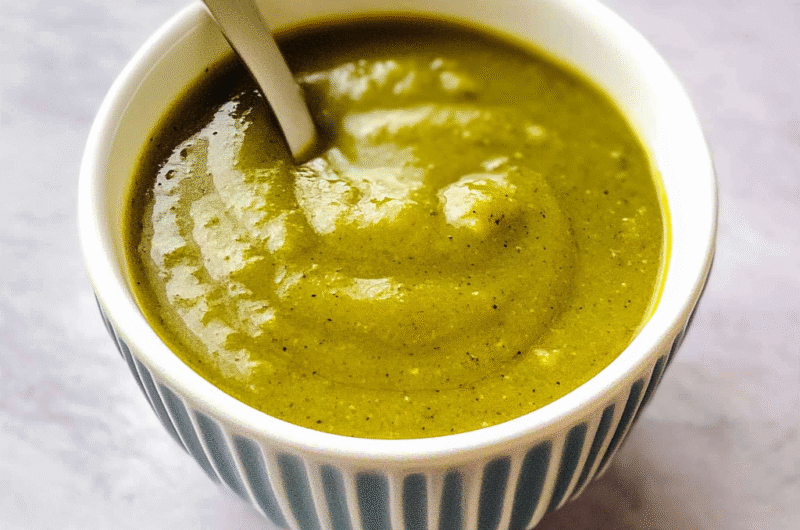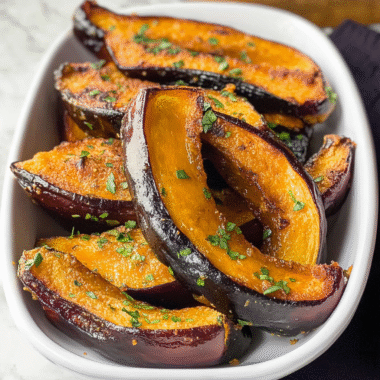Introduction
Green enchilada sauce is a staple in many Mexican and Tex-Mex dishes, offering a vibrant, tangy flavor that enhances everything from enchiladas to burritos. Its lively green color and fresh taste showcase the essence of its core ingredients, making it a must-have in any home cook's repertoire.
Making green enchilada sauce from scratch not only allows you to control the flavor and heat level, but it also elevates your dishes, giving them a homemade touch that store-bought versions simply cannot match. Whether you prefer a mild or spicy sauce, this recipe provides the perfect base for your culinary creations.
Ingredients
- 12 oz tomatillos, husked and rinsed
Tomatillos are the primary component of green enchilada sauce, providing a tart flavor that balances beautifully with other ingredients. Their bright acidity helps to wake up the flavors of the sauce. - 1-2 jalapeños, seeds removed for less heat
Jalapeños add a pleasant warmth to the sauce without overwhelming it. Depending on your heat preference, you can adjust the number of jalapeños, ensuring the sauce suits your palate. - 1 small onion, chopped
Onions contribute sweetness and depth to the sauce. Cooking them until soft enhances their flavor, which becomes a supportive background note against the bright tomatillos. - 2 cloves garlic, minced
Garlic infuses the sauce with a rich aroma and robust flavor. It complements the other ingredients perfectly, while also adding a hint of earthiness that rounds out the sauce. - 1 cup fresh cilantro, stems removed
Cilantro adds a fresh, herbal quality to the sauce, making it bright and lively. The addition of cilantro is essential for achieving an authentic flavor profile. - 1 teaspoon ground cumin
Cumin lends a warm, earthy note to the sauce, enhancing depth and complexity. It pairs harmoniously with the other components, giving the sauce an aromatic foundation. - Salt to taste
Salt is crucial for balancing flavors. It enhances the overall taste and helps to bring out the natural sweetness of the tomatillos and onions, ensuring a well-rounded sauce. - 1-2 cups chicken or vegetable broth
Broth is essential for controlling the sauce's consistency. It can be adjusted to achieve the desired thickness, making it versatile for different recipes.
Directions & Preparation
Step 1: Prepare the tomatillos and jalapeños.
Start by husking and rinsing the tomatillos to remove the sticky residue, then chop the jalapeños after removing the seeds if you prefer a milder sauce. This preparation ensures that the sauce has the characteristic tartness of tomatillos and the right amount of heat from the jalapeños.
Step 2: Sauté the onions and garlic.
In a skillet, heat a splash of oil and sauté the chopped onions until they become translucent. Add the minced garlic and cook for an additional minute. This step is important as it builds a flavor base for your sauce, transforming the onions and garlic into aromatic components that will deeply enhance your final product.
Step 3: Roast the tomatillos and jalapeños.
Transfer the tomatillos and jalapeños to a baking sheet and roast them in a preheated oven at 400°F for about 15-20 minutes, or until they are slightly charred. Roasting deepens the flavors, creating a rich, smoky background that adds complexity to your sauce.
Step 4: Blend the roasted ingredients with cilantro.
In a blender, combine the roasted tomatillos, jalapeños, sautéed onions, and garlic with fresh cilantro. Blend until smooth, adding just enough chicken or vegetable broth to achieve your preferred consistency. This step is critical because blending melds all the flavors together beautifully, ensuring a harmonious sauce.
Step 5: Season the sauce and adjust consistency.
Once blended, taste the sauce and add salt and more broth if necessary. The seasoning will enhance the flavor, while additional broth allows you to control the thickness according to your liking. Balancing the flavors at this stage is essential for a delicious sauce.
Step 6: Simmer the sauce.
Pour the blended mixture back into the skillet and let it simmer for about 10 minutes. This allows the flavors to meld together and develop further. Simmering thickens the sauce, enhances its richness, and creates a mouthwatering aroma that fills your kitchen.

The Role of Roasting in Flavor Development
Roasting tomatillos and jalapeños is a key step that elevates the overall flavor profile of the green enchilada sauce. The slight charring adds an essential depth without overpowering the inherent freshness of the ingredients. It enhances their natural sweetness, creating a balance that is often missing in unroasted sauces. This technique not only pleases the palate but also enriches the visual appeal, setting the stage for a delightful dish.
Cilantro: The Fresh Finishing Touch
Cilantro is much more than just a garnish; it is a critical ingredient that adds brightness and freshness to the sauce. Its vibrant flavor enhances the cooked components and lends an authentic quality that stands out in Mexican cuisine. However, the quantity of cilantro can be adjusted based on personal preference, allowing each cook to customize the sauce's flavor to their liking.
Adjusting Heat Levels: Finding Your Perfect Spice
For those who enjoy a bit of kick, adjusting the number of jalapeños is essential. By controlling both the quantity and whether or not the seeds are included, you can create a sauce that suits your taste buds perfectly. For a milder sauce, opt for just one jalapeño and ensure to remove all seeds, while adventurous cooks can include more for a bolder flavor. Experimentation is key to finding that perfect balance.
FAQs
What should I do if the sauce is too thick?
If your sauce is too thick, gradually stir in more broth until you reach your desired consistency. This will help thin it out while still maintaining flavor.
Why does my sauce taste bland?
If the sauce tastes bland, it may require more salt or additional acidity from lime juice. Taste as you go and add ingredients to enhance its flavor.
Is it possible to substitute tomatillos?
While tomatillos are unique in flavor, you can try blending green tomatoes or even green bell peppers as a substitute, though the taste will vary.
Can I use dried cilantro instead of fresh?
It's best to use fresh cilantro for this sauce, but if you only have dried, start with a pinch, keeping in mind that the flavor won’t be as vibrant.
Can I add more jalapeños for extra heat?
Yes, you can easily increase the number of jalapeños to amplify the spice. Be cautious and taste as you go to avoid making it overly spicy.
What if I overcooked the sauce?
If you overcooked the sauce, it might taste bitter. In this case, you can try adding a bit of sugar or honey to counteract the bitterness.
Conclusion
Crafting your own green enchilada sauce opens up a world of flavors that you simply can't find in prepackaged versions. The process allows you to personalize the heat and acidity to fit your tastes, ultimately leading to a sauce that complements your dishes perfectly.
With practice and a little experimentation, this green enchilada sauce can become a signature component in your culinary repertoire, perfect for burritos, tacos, or as a tasty dip. Enjoy the process and the delicious results!
Recipe Card
Notes
Additional serving suggestions: pair with a crisp salad, garlic bread, or roasted seasonal vegetables for balance.
For make-ahead, prep components separately and assemble just before heating to preserve texture.
Taste and adjust with acid (lemon/vinegar) and salt right at the end to wake up flavors.






